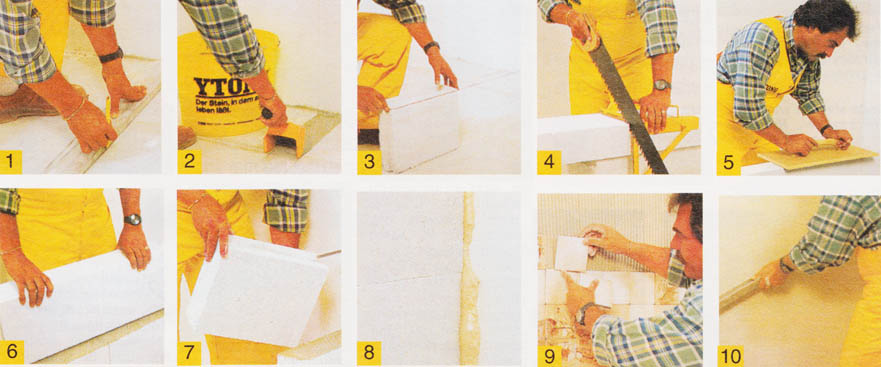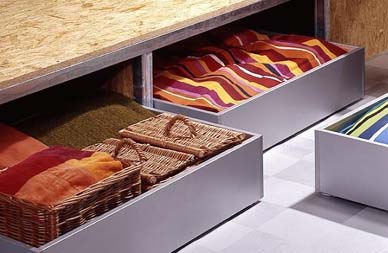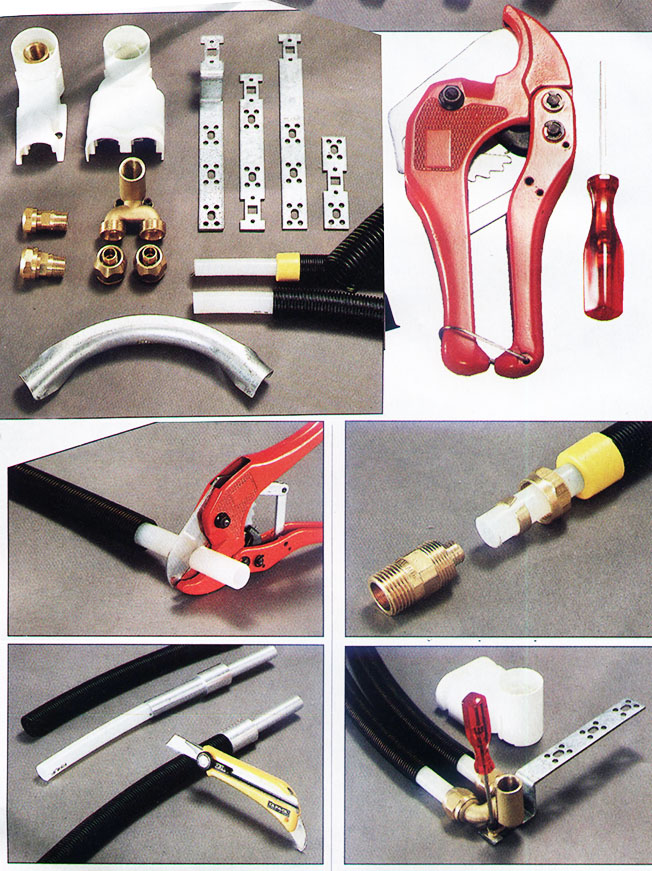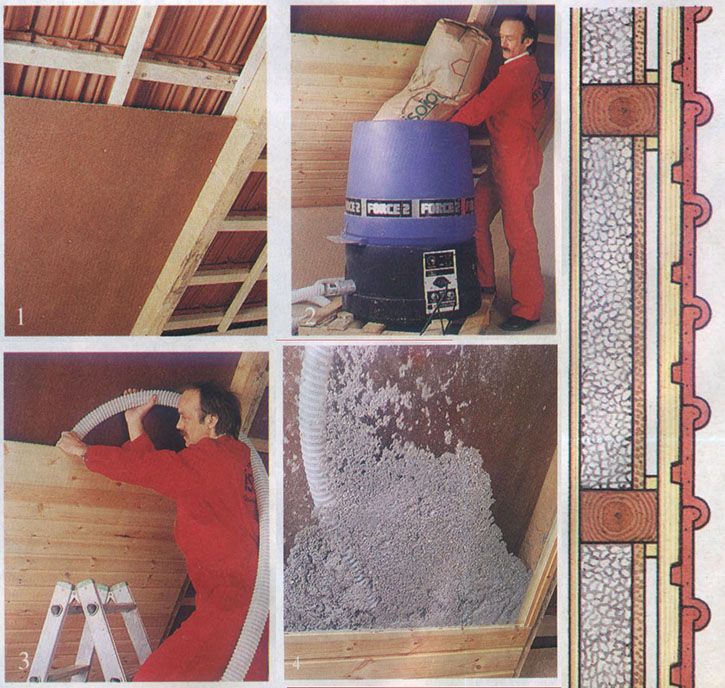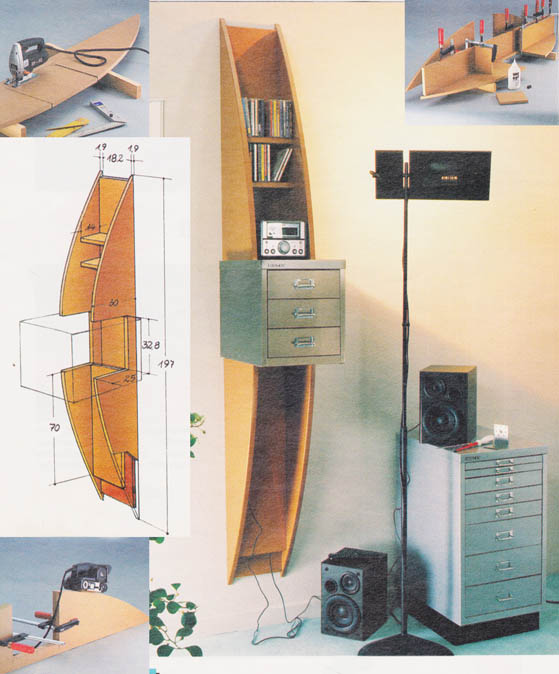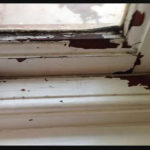JAK UNIKNĄĆ SZKÓD?
Zimne miejsca na ścianach prowadzą do grzybienia tynków. Niebezpiecznym zjawiskiem, na które należy zwrócić baczną uwagę są zimne miejsca w ścianach. Gdy w płaszczu izolującym są luki np. z powodu przebiegających przewodów instalacyjnych lub kanalizacyjnych itp., które nie są wystarczająco dobrze otulone, w miejscach tych zimno przenika, aż do wewnętrznej warstwy ściany w mieszkaniu. Tutaj właśnie następuje kondensacja pary wodnej – początkowo zupełnie niewidocznej. Dopiero czarne plamy grzybów na ścianie uwidoczniają w nieprzyjemny sposób nieodpowiednią izolację. Dlatego bardzo ważne jest prawidłowe przygotowanie do każdego etapu adaptacji strychu. Proponujemy zapoznanie się z różnymi materiałami i metodami wykonania izolacji.
 Otulina utkana z włókna szklanego
Otulina utkana z włókna szklanego
Wełny mineralne produkowane są na bazie szkła lub kamienia. Najbardziej rozpowszechnioną, watę szklaną, uzyskuje się z piasku kwarcowego, sody i wapna, które miesza się w temperaturze około 1000°C. Płynna masa wdmuchiwana jest przez cienkie dysze. Powstające włókna tkają watę. Materiał ten często jest oferowany z aluminiową folią, która stanowi zaporę dla wilgoci. Nieosłonięte maty trzeba dodatkowo zabezpieczyć. Wada: zbyt mata sztywność – odstęp dla przewietrzania musi być większy. Parametry: współczynnik przenikania ciepła k = 0,30 (warstwa grubości 14 cm). Cena 1 m2 około 30 zł.
 Lekka pianka z poliestru
Lekka pianka z poliestru
Podstawowym materiałem systemu uszczelniającego Styrotect S jest Styropor. Użyliśmy go do izolacji poddasza i pokazujemy go na następnych stronach. Materiałem wyjściowym jest poliester, z którego wykonuje się: pojemniczki na jogurty, szkła do okularów, wnętrza lodówek itp. Ten właściwie sztywny materiał rozpulchniany jest węglowodorem tak, że zwiększa swą objętość ok. 50 razy – Styropor w 98% składa się z powietrza. To sprawia, że jest idealnym materiałem izolacyjnym. Wada: W ograniczonym stopniu tłumi hałas. Parametry: współczynnik przenikania ciepła k płyty o grubości 14 cm wynosi 0,27.
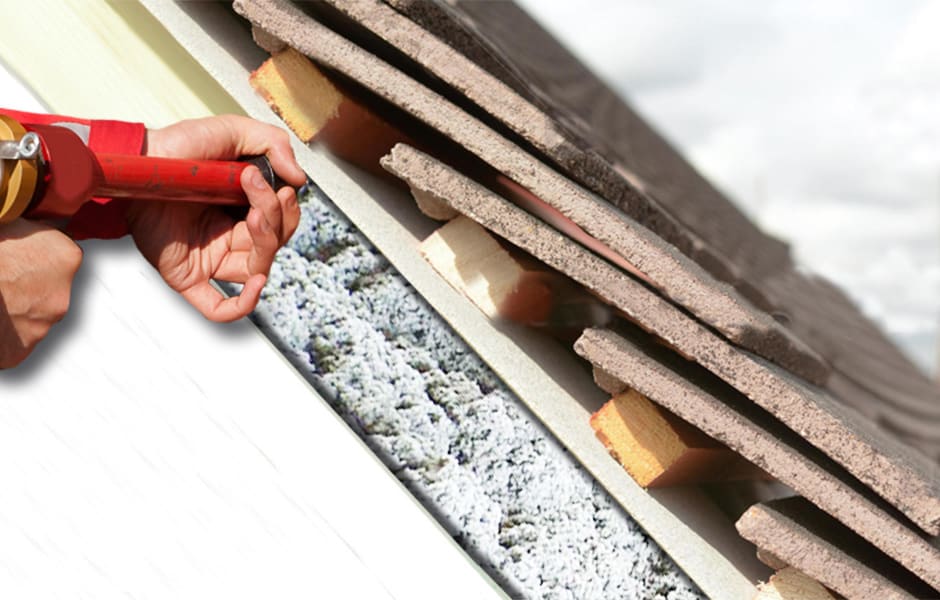 Makulatura jako izolacja przed zimnem
Makulatura jako izolacja przed zimnem
Isofloc to nazwa materiału, który w 100% wykonany jest ze starych gazet. Oferowany jest w 15-kilogramowych workach. Sól borowa sprawia, że jest on niepalny, stabilny, sztywny, i odporny na szkodniki. Może on służyć jako wzorzec materiału ekologicznego. Isofloc jest wdmuchiwany specjalnym przyrządem w ustrój dachowy. Wnika w najdrobniejsze szczeliny stwarzając w ten sposób doskonałą warstwę izolacyjną. Wada: majsterkowicz może wykonać jedynie prace przygotowawcze. Resztę należy powierzyć specjaliście. Parametry: współczynnik przenikania ciepła k = 0,27 przy 14 cm warstwie.
Współczynnik przenikania ciepła k
Współczynnik k określa tzw. przenikalność cieplną materiałów i elementów ścian. Z których zbudowany jest budynek. Wzór na ten współczynnik obliczył na przełomie wieków austriacki fizyk i termodynamik Ludwik Boltzmann. Wartość współczynnika przenikania ciepła zmniejsza się wraz ze wzrostem właściwości izolacyjnych.
■ Pomieszczenia ochładzają się nie tylko w wyniku przenikania ciepła przez ściany, lecz także w wyniku przewietrzania oraz w miejscach niewłaściwej izolacji. Jeśli podmuchy wiatru przenikają poprzez szpary do wnętrza domu. nie pomoże nawet najdoskonalszy materiał izolacyjny o najniższej wartości współczynnika k .
■ Doskonała izolacja jest uwarunkowana najwyższą dokładnością przy wykonywaniu prac. Inaczej nie spełni należycie swego zadania.

